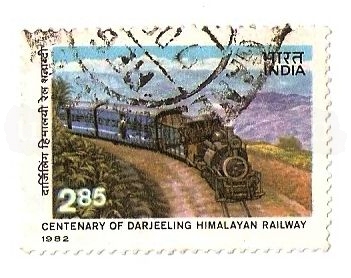
Centenary of DHR --- The scenic Darjeeling-Himalayan Railway line having a two feet wide track, conceived by Franklin Prestage, the agent of the Eastern Bengal Railway, links Darjeeling to Siliguri, a distance of 87.48 Kms. A unique engineering feat passing through different climatic zones offers a picturesque and scenic beauty. Laid on the famous Hill Cart Road, the Railway line appears to be playing sneak-peek with the road as they meets each other at several places. The line between Sukna and Darjeeling is almost all along located on the roadside, either skirting hill side or on the far edge of the road. The alignment passes through hills and gradually climbs up to the maximum altitude of 7,407 feet at Ghum. The most amazing method adopted by DHR in the history of hill-railway contrsuctions is reverse zig-zag movement. Each stage of the zig-zag helps to gain additional height i.e. the train moves backward on the central stage gains altitude & again goes forward. The need for tunnels was completely obviated by means of 'loops' and 'reverses'. There are 4 loops of which the most renowned one is the Batasia loop, 5 reverses in the shape of 'Z', 5 major and 498 minor bridges and 177 unmanned level crossings on the section. About 89% of the tracklength is on curves, the sharpest curve having a radius of 59 feet. The construction of the section began in 1878 and completed in July, 1881. The stamp issued by IndiaPost on completion of 100 years of Darjeeling Himalayan Railways (Heritage Railway declared by UNESCO). Date of issue: Dec 18, 1982 with denominations 285p (₹ 2.85/-).


